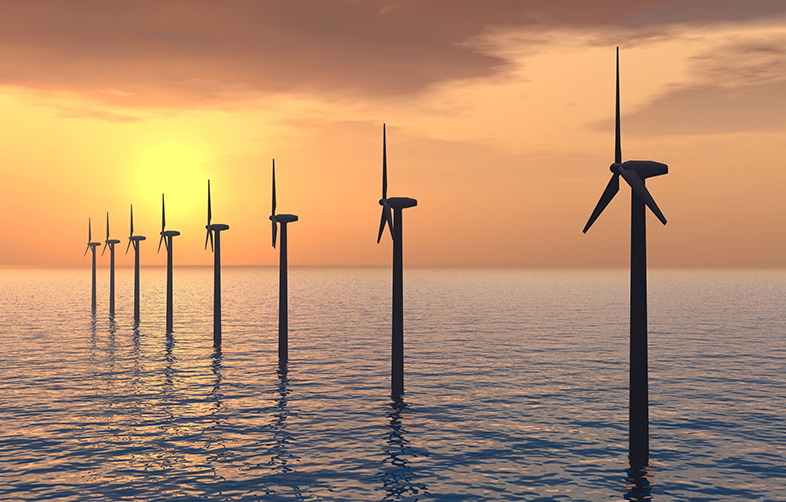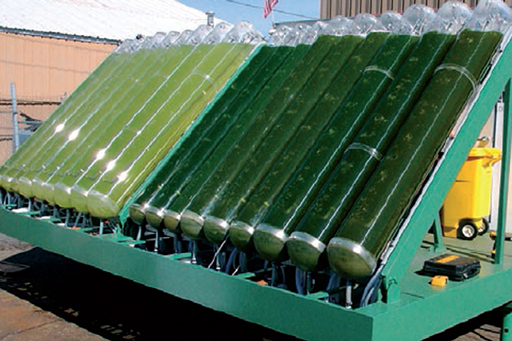4.4 Microalgae and other microorganisms
Seaweeds are one form of large algae, but there are also single-celled aquatic microalgae and cyanobacteria that photosynthesise. Designs for bioreactors to enable microalgae to be used as an energy source have been suggested, as shown in Figure 8.
They could potentially make a very attractive bioenergy source because:
- they grow in water, and are tolerant of wide ranges of salinity and temperature
- they do not occupy land that could be used for other products
- under appropriate conditions, the cells of the algae can contain high percentages of oils, and the cyanobacteria can excrete oil into their surroundings: the microbial residues after oil extraction can also be used as an energy source
- it is possible that they could be used simultaneously to clean up waters polluted with plant nutrients, and the resulting biomass, including the oil, used for energy (Clarens et al., 2010)
- some microalgae forms are also seen as candidate material for the capture of carbon dioxide from power plants.
Can leftover products from non-energy uses be used as additional ‘secondary’ bioenergy sources? You look at that question next.

